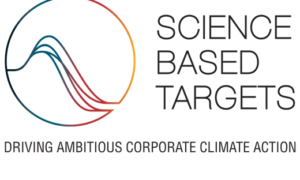Global standards play a pivotal role in ensuring interoperability, safety, and efficiency, while cutting-edge advancements in PVT technology push the boundaries of energy harvesting and retention. This article explores the synergy between these advancements and the importance of standardised frameworks to drive sustainability and innovation.
Solar HVAC (Heating, Ventilation, and Air Conditioning) systems and Photovoltaic Thermal (PVT) materials are at the forefront of this transformation as the world is shifting towards renewable energy.
Solar energy systems have evolved significantly, integrating state-of-the-art materials and methodologies to enhance efficiency and adoption. Beyond technical advancements, their role in climate change mitigation and energy independence highlights their transformative potential for the energy sector and the global economy.
Global Solar HVAC Standards
Solar HVAC system standardisation mitigates the challenges of fragmented industry practices and varying efficiency benchmarks. Key international standards include:
| Standard | Focus Area | Benefits |
| IEC 62109 | Safety and performance in solar PV systems | Enhances safety, guides design and testing |
| ASHRAE 93 | Testing of solar heating and cooling | Promotes efficiency and performance benchmarks |
| EN 12975 | Solar thermal system requirements | Ensures reliability, safety, and energy savings |
| ISO 9806 | Test methods for solar thermal collectors | Advances collector performance and durability |
| UL 2703 | Solar PV system component safety | Minimizes electrical and fire hazards |
Role of Standards
Standards play a crucial role in advancing technology and ensuring its implementation. They facilitate interoperability, allowing seamless integration across diverse technologies. The standards also ensure safety, reducing the risks of electrical and thermal hazards. On a global scale, they promote consistency, simplifying compliance for manufacturers and promoting international trade. Moreover, standards drive efficiency by encouraging innovative designs that align with efficiency benchmarks, improving performance.
Global standards act as a bridge between manufacturers and markets, enabling innovation while ensuring systems are universally compatible and reliable. Their adoption leads to reduced production costs and helps increase consumer trust.
PVT Materials: advancements and efficiency
PVT systems represent a revolutionary integration of photovoltaic cells and thermal collectors, achieving unprecedented energy efficiency. The latest developments include:
Key Advancements
| Technology | Impact |
| Bifacial Solar Cells | Increases electrical efficiency by 25% |
| Thermal Energy Storage | Retains up to 90% of harvested heat |
| Nano-Structured Materials | Reduces thermal losses, improving efficiency by 15% |
| Concentrated PVT Systems | Amplifies solar radiation, boosting efficiency by 30% |
Comparative Analysis
| System Type | Electrical Efficiency | Thermal Efficiency | Overall Efficiency |
| Traditional PV | 15-20% | – | 15-20% |
| Early PVT | 10-15% | 50-60% | 60-75% |
| Advanced PVT | 20-25% | 70-80% | 90-95% |
Beyond efficiency
Modern PVT systems also contribute to building integration and energy resilience. For instance, they can power HVAC systems during peak sunlight while storing excess energy for night-time use. This dual functionality is crucial for grid independence and reducing energy costs.
Synergy between Standards and PVT Advancements
Integrating the latest PVT technologies into standardised frameworks enhances adoption rates by encouraging manufacturers and consumers to transition to advanced systems. This approach also facilitates collaboration and secures funding for research and development, accelerating innovation. Additionally, it aligns technological advancement with sustainability goals, to mitigate climate change.
Real-world applications
PVT systems have been successfully integrated into various sectors, showcasing their efficiency. In residential buildings, it provides a comprehensive solution by delivering heating, cooling, and electricity. Commercial facilities benefit from the integration of PVT systems through enhanced energy efficiency and reduced operational costs, making them a cost-effective choice for businesses. In industrial applications, these systems support energy-intensive processes while lowering carbon footprints.

Figure 1: Graph illustrating the improvement in energy retention efficiency across traditional PV, early PVT, and advanced PVT systems.
Challenges and future directions
The integration of global standards faces several challenges, including the need to adapt them to diverse regional climates and infrastructures, ensuring they remain relevant across varying conditions. The standards must evolve alongside innovations to stay effective and applicable. Furthermore, international collaboration is vital for strengthening partnerships to achieve harmonization across industries.
Looking ahead the future should be on developing dynamic standards that integrate emerging technologies. Expanding global testing and certification facilities will further support innovation and compliance. Increased investment in research and development for high-efficiency solar HVAC and PVT systems is essential to meet sustainability demands.

Pioneering Sustainability
A future driven by renewable energy depends on continued investment in innovation and regulation. As PVT materials achieve higher efficiencies, they pave the way for more sustainable and resilient energy systems.
Conclusion
The integration of global solar HVAC standards and PVT advancements heralds a new era of energy efficiency and sustainability. By harmonizing innovation with standardization, the industry can achieve scalable solutions that meet the demands of a rapidly changing world.
Increased awareness, investment, and international cooperation will be key to unlocking the full potential of these technologies, ensuring a greener and more energy-secure future for generations to come.
References:
∙ International Electrotechnical Commission (IEC). “IEC 62109.”
∙ American Society of Heating, Refrigerating and Air-Conditioning Engineers. “ASHRAE 93.”
∙ Science Direct. “Bifacial Solar Cells.”
∙ Energy Storage Journal. “Phase Change Materials.”
∙ Nano Letters. “Nano-Structured Coatings.”
∙ IEEE Journal of Photovoltaics. “Concentrated Photovoltaic Thermal.”
Expertise shared by-
Harsh Bardhan
HVAC Technical Consultant
Cookie Consent
We use cookies to personalize your experience. By continuing to visit this website you agree to our Terms & Conditions, Privacy Policy and Cookie Policy.















